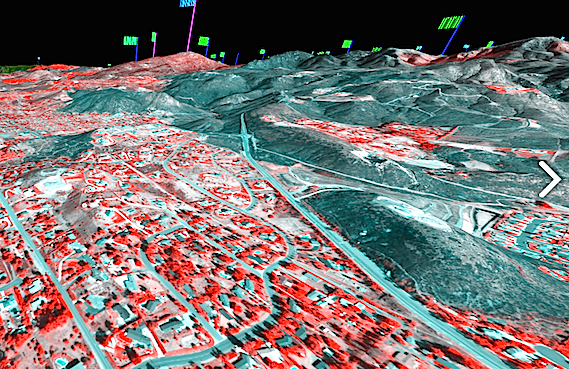
[SatNews] The new cyberinfrastructure system monitors and forecasts the paths of wildfires, the number and scale of which are on the rise in the U.S.
The National Science Foundation (NSF) is supporting the WIFIRE initiative, led jointly by the University of California at San Diego (UCSD) and the University of Maryland (UMD), to better monitor, predict and mitigate wildfires in the future.
WIFIRE merges observations, such as satellite imagery and real-time data from sensors in the field, with computational techniques like signal processing, visualization, modeling and data assimilation, to monitor environmental conditions and predict where and how fast a wildfire will spread. The project is part of the NSF Hazards SEES program, which enhances sustainability through the use of advanced technologies and new methods.
In September 2013, UCSD was awarded a grant to build the end-to-end cyberinfrastructure (CI). Their collaborative team of scientists, engineers, technologists, government policy managers, private industry, and firefighters will architect and implement CI pathways that enable joint innovation for wildfire management. Scientific workflows are used so as to incorporate distributed programming models and will simplify the implementation of engineering modules for data-driven simulation, prediction, and visualization, while allowing integration with large-scale computing facilities.

WIFIRE will be scalable to users with different skill-levels via specialized web interfaces and user-specified alerts for environmental events broadcasted to receivers before, during, and after a wildfire. The approach is scalable, which allows many sensors to be subjected to user-specified data processing algorithms to generate threshold alerts within seconds. Integration of this sensor data into both rapidly available fire image data and models will better enable situational awareness, responses, and decision support at local, state, national, and international levels.
The San Diego Supercomputer Center (SDSC) and Calit2's Qualcomm Institute are building this integrated CI system for supporting social-ecological resilience to the changing fire ecology regime in the face of urban dynamics and climate change, together with collaborators from the Mechanical and Aerospace Engineering Department at UCSD's Jacobs School of Engineering and the UMD's Department of Fire Protection Engineering.
The research in this episode was supported by NSF award#1331615, Hazards SEES Type 2: WIFIRE: A Scalable Data-Driven Monitoring, Dynamic Prediction and Resilience Cyberinfrastructure for Wildfires.
For more information, please visit the National Science Foundation website here and the WIFIRE website located here.

